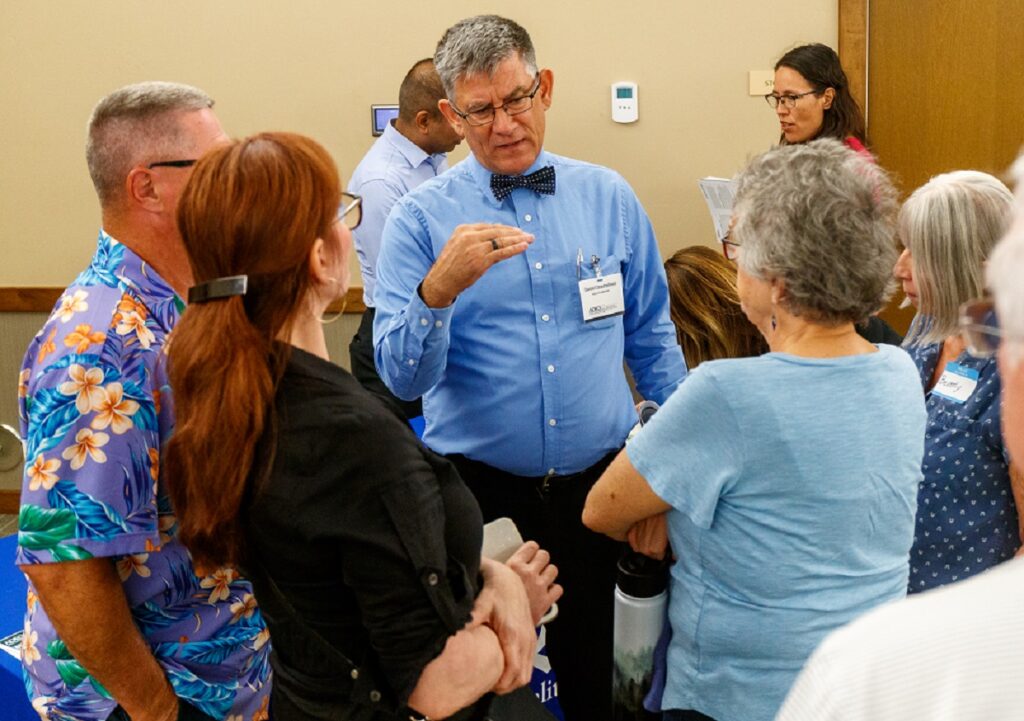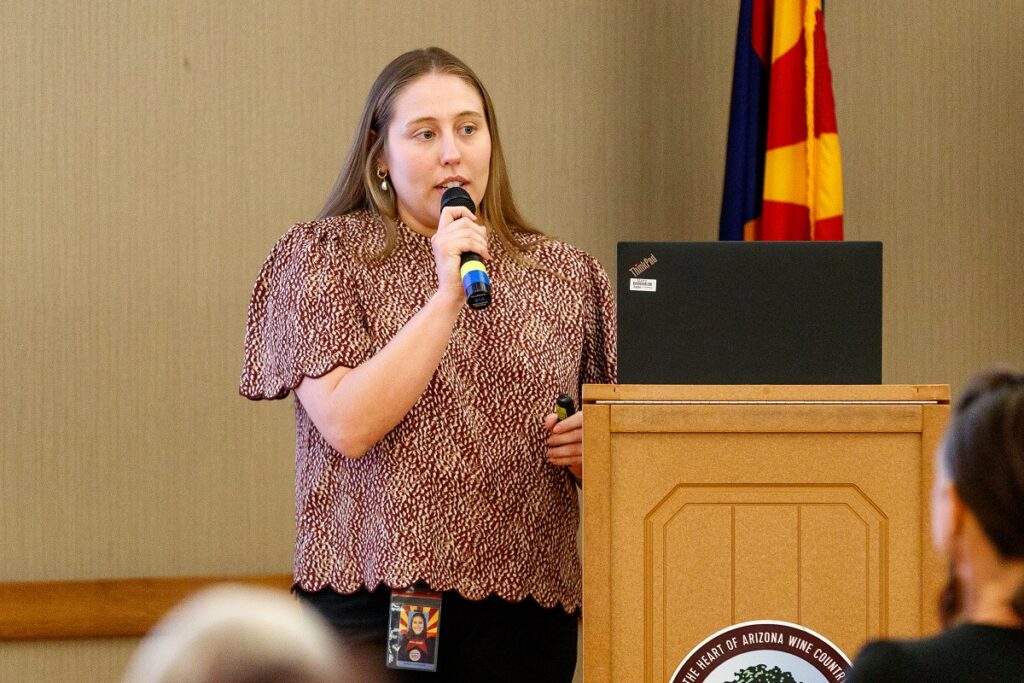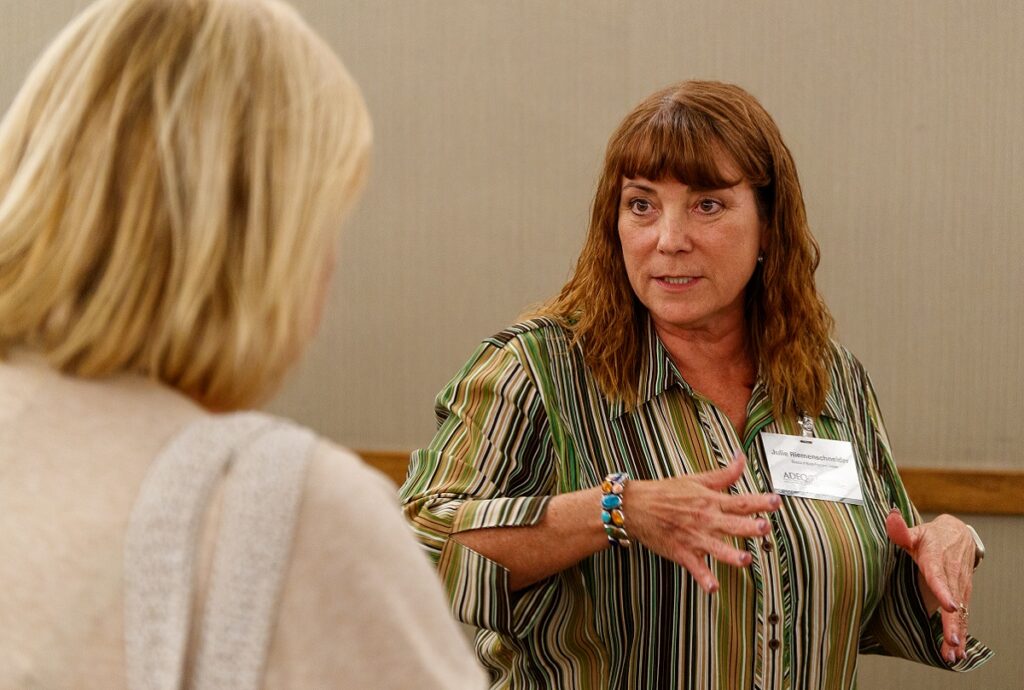The Arizona Department of Environmental Quality held a public meeting at the Cottonwood Recreation Center on Sept. 12 to discuss the results of the air quality monitoring study it conducted in response to concerns about dust and windblown metals originating in the slag pile left behind by the former Clemenceau smelter.
The results of the ADEQ study showed that particulate air pollution from the slag pile is significantly below both national and regional averages.
Daniel Czecholinski, the director of ADEQ’s air quality division, explained that air quality sampling was conducted at two locations, the Cottonwood Kids’ Park located east of the slag pile and the Veterans of Foreign Wars post located directly north of the slag pile. Samples were taken every three days from February through June with the assistance of community volunteers and analyzed by a third-party laboratory.
“We actually extended that monitoring period by a month based on concerns that we heard from the community,” Czecholinski said. “We wanted to make sure we had enough analytical data.”

Dust Below National Standard
Thirty-six samples were collected at each location. Of those samples, 35 of the samples from the VFW post and 29 of the samples from the park were analyzed for dust particles 10 micrometers or less in diameter; the national standard for air quality set by the Environmental Protection Agency is a maximum of 150 micrograms of PM10-sized particles per cubic meter in a 24-hour period.
Thirty-one of the samples from the post and 25 samples from the park were also analyzed for airborne metals. Czecholinski noted that issues with solar-powered collection equipment had interfered with sample collection, as well as administrative problems.
“We also had some lab errors [where] the lab unfortunately disposed of the samples before we analyzed for metals,” Czecholinski said. “However, we had enough data to draw some conclusions.”
“From the kids’ park, all the levels are significantly below the national ambient air quality standards,” Czecholinski summarized. “We did not see a problem with PM10 or dust at the park. On looking at the VFW post, we also did not have any exceedance [sic] of the national ambient air quality standards. We had one day that was right at the standard, 150 µg/m³. That day we had strong winds coming from the south, sustained at 20 miles per hour, with gusts over 25 mph, so that definitely contributed to the levels. All other days of the monitoring were significantly below the standard.”
“Based on that data, we determined that no additional monitoring for PM10 is needed,” Czecholinski concluded.
The average 24-hour dust concentration level at the Cottonwood Kids’ Park during the four-month study period was 14 µg/m³, while the maximum for any 24-hour period was 37 µg/m³. The average for the VFW post, which is located closer to the slag pile than the park is, was 42 µg/m³, and the maximum for any 24-hour period was 150 µg/m³; only three days during the study period exhibited dust levels greater than 100 µg/m³ at the post.
The national average for PM10 dust concentrations was 63.4 µg/m³ in 2023, down from 89 µg/m³ in 1990. In the American Southwest, however, the average PM10 dust concentration in 2023 was 110.8 µg/m³, with the highest average annual level having been recorded in 2011 at 179.5 µg/m³. During the 14 years from 2010 to 2023, average PM10 levels across the Southwest exceeded 100 µg/m³ in all but three of those years.
For comparison, according to ADEQ data from Sept. 18, the 24-hour average for PM10 in Phoenix was 79 µg/m³, with a maximum of 253 µg/m³. EPA data indicates that average annual PM10 concentration in Phoenix in 2023 was 126.9 µg/m³.

Lead Below National Standard
“The lead sampling is a little different,” Czecholinski said. “At the VFW, we saw a level of 0.1 µg/m³. The national ambient air quality standard is 0.15 µg/m³. It’s elevated.”
Airborne lead levels at the Cottonwood Kids’ Park, by contrast, averaged 0.002 µg/m³. The national average for airborne lead in 2023 was 0.027 µg/m³, or 13 times higher than observed levels at the park, down from 0.203 µg/m³ in 2010.
“Based on the elevated data … ADEQ has determined that additional analysis is required,” Czecholinski said. ADEQ now plans to conduct a three-month dedicated study on airborne lead at the VFW post, for which they are currently developing contracts.
Czecholinski added that Minerals Research Inc., which is processing the slag pile to recover usable metals, has applied for its new air quality permit as required following ADEQ’s termination of the previous consent order that allowed the operation to continue, and that the new permit will be subject to a public hearing once ADEQ has finished its evaluation of the application.
ADEQ waste programs director Julie Riemenschneider addressed ongoing soil sampling efforts. “We said it would take us six to eight months,” Riemenschneider said, but told the audience that the sampling process would take an unclear amount of additional time to complete.

“We’ve done over 750 samples,” Riemenschneider said. “For anyone who’s every looked at investigation sites, this is a lot of samples … Because we did take so many samples, we really got a good covering.”
Staffers are using X-ray fluorescence spectrometers to conduct soil testing, and 10% of samples taken are double-checked by a laboratory to ensure that results from the handheld spectrometers are accurate. Riemenschneider said that they are also attempting to determine natural background levels of metals in the area — because Cottonwood is a mining town, “there will be elevated numbers that are naturally occurring” — and chemical fingerprints for the background levels, smelter products and crushed slag.
ADEQ remedial manager Tina LePage was unable to say whether isotope analysis would be employed to derive such fingerprints.
“Once we determine if our samples are above regulatory standards, we will complete the WARF process, which is just a fancy word for state Superfund,” Riemenschneider said. The department will hold another public meeting when results from the soil tests are available if there is sufficient public interest, and future action will depend upon a recommendation from the Arizona Department of Health Services based on the report’s findings.
Mya Davis, an environmental toxicology program manager at ADHS, said it would take the department two to three months to prepare its report after ADEQ completes data collection and was careful to point out that the agency does not collect any samples or studies on its own, but bases its conclusions exclusively on information from agencies.
The full report on the completed air quality study can be viewed at below and the ADEQ website.
ADEQ-Cottonwood-Testing-Report


